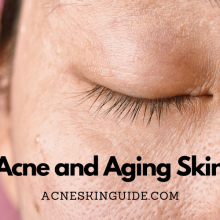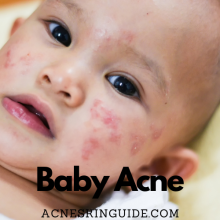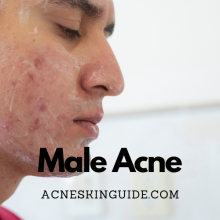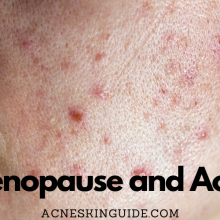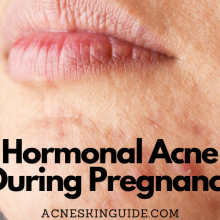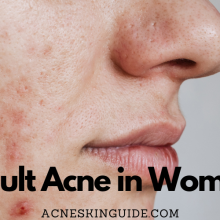Acne in Different Ethnic Groups – Skin Type Considerations and Solutions | AcneSkinGuide
Summary of Acne in Different Ethnic Groups
This article explores the nuanced challenges and considerations surrounding acne management in diverse ethnic groups. It highlights the epidemiological insights that reveal disparities in acne prevalence and severity across different racial and ethnic populations. The article delves into the underlying factors, focusing on the pivotal role of skin type characteristics like melanin content, sebum production, and follicular keratinization in acne development. It emphasizes the importance of customized treatment approaches, addressing concerns such as post-inflammatory hyperpigmentation and keloid scarring, while maintaining healthy skin barrier function.
The article also underscores the significance of culturally-relevant care, incorporating traditional and holistic remedies, and leveraging emerging technologies and synergistic solutions. Importantly, it acknowledges the existing challenges, including lack of diversity in clinical research and barriers to accessing specialized dermatological services, calling for continued efforts to advance personalized acne care for people of color.
Our Top 5 Recommended Acne Treatment Products

Addressing the Unique Acne Challenges Faced by Diverse Skin Tones
Acne is a frustrating skin condition that affects individuals of all ages and backgrounds. However, the manifestation and management of acne can vary significantly across different racial and ethnic groups. Understanding these nuances is essential for providing effective, personalized, and culturally-appropriate care.
Epidemiological Insights: Acne Prevalence and Severity Trends
Acne is a global concern, but epidemiological data has revealed notable disparities in its prevalence and severity among various ethnic populations. Studies suggest that individuals of Asian, African, and Hispanic descent tend to experience higher rates of acne compared to their Caucasian counterparts. Additionally, the severity of acne lesions, including inflammatory and non-inflammatory types, has been found to be more pronounced in certain ethnic groups.
Underlying Factors: The Role of Skin Type Characteristics
The differences in acne manifestation across ethnicities can be largely attributed to inherent variations in skin type characteristics. Factors such as melanin content, sebum production, and follicular keratinization play pivotal roles in acne development and progression.
Melanin, the pigment responsible for skin tone, has been closely linked to acne formation. Higher melanin levels, often seen in individuals with darker skin complexions, can contribute to increased susceptibility to comedone (blackhead and whitehead) development. This is due to the potential influence of melanin on follicular obstruction and sebum oxidation.
Furthermore, distinctions in sebum production and pore size across ethnic groups can impact the likelihood of clogged pores and subsequent acne lesions. For instance, individuals of Asian descent have been shown to have larger pore sizes and increased sebum secretion, which may predispose them to a higher risk of acne.
Skin exposure to sunlight and photo-aging processes can also complicate acne management in diverse ethnic populations. The interplay between these environmental factors and inherent skin characteristics requires specialized considerations.
Customized Acne Treatment Approaches
The one-size-fits-all approach to acne management often falls short when dealing with the unique skin care needs of different ethnic groups. Tailoring the selection and application of cleansers, topical treatments, and oral medications is crucial to ensure optimal efficacy and minimize adverse effects.
For individuals with darker skin tones, particular attention must be paid to addressing post-inflammatory hyperpigmentation (PIH), a common concern. PIH can result in persistent discoloration and scarring, which can significantly impact an individual’s emotional well-being and self-confidence. Specialized treatment strategies, such as the use of targeted brightening agents and gentle exfoliators, are essential for managing both the acne and the associated pigmentary concerns.
Another important consideration is the risk of keloid scarring, which is more prevalent in certain ethnic groups, particularly those of African and Asian descent. Minimizing the potential for keloid formation requires a nuanced approach to acne treatment and scar management.
Maintaining healthy skin hydration and barrier function is also crucial for managing acne in diverse skin types. Individuals with darker skin tones are more prone to dryness and irritation from certain acne treatments, which can compromise adherence and lead to suboptimal outcomes.
Culturally-Relevant Acne Care Approaches
Providing culturally-sensitive and empathetic care is paramount when addressing acne in diverse ethnic communities. Understanding the cultural beauty standards, stigmas, and psychosocial impacts associated with acne within different populations is essential for developing effective management strategies.
Incorporating traditional or holistic remedies that are culturally meaningful and accepted can enhance the effectiveness of acne management plans. By integrating these approaches with evidence-based medical treatments, practitioners can build trust, enhance patient engagement, and improve overall outcomes.
Addressing socioeconomic and access barriers to quality dermatological care is also crucial for ensuring equitable acne management across diverse populations. Leveraging community-based outreach programs and telemedicine solutions can help bridge the gap and improve access to culturally-competent acne care.
Emerging Innovations and Synergistic Solutions
Advancements in technology and research are paving the way for more effective and personalized acne management strategies for people of color. Emerging light-based therapies, such as photodynamic therapy and laser treatments, hold promise for addressing the specific needs of ethnic minorities, particularly in managing PIH and minimizing scarring.
Additionally, targeted delivery systems and novel active ingredient combinations are being explored to optimize acne control while minimizing irritation and dryness, common challenges faced by individuals with darker skin tones.
Adopting a synergistic, multi-pronged approach that addresses the various pathways involved in acne development can lead to more comprehensive and effective solutions. This may include combining topical treatments, oral medications, and lifestyle modifications tailored to the individual’s unique skin type and cultural preferences.
Challenges and Limitations
While significant progress has been made in understanding and addressing acne in diverse ethnic groups, there are still several challenges and limitations that need to be addressed:
- Lack of diversity in clinical research: Historically, the majority of acne-related clinical studies have been conducted on Caucasian populations, limiting the generalizability of findings to other ethnic groups.
- Insufficient data on certain ethnic minorities: There is a dearth of research focused on acne prevalence, severity, and treatment outcomes in specific ethnic minority groups, such as individuals of Middle Eastern, South Asian, and Indigenous backgrounds.
- Cultural barriers and stigma: Deeply rooted cultural perceptions and stigmas surrounding acne can hinder open dialogue, treatment adherence, and the overall effectiveness of care, particularly in certain ethnic communities.
- Access to specialized care: Availability and accessibility of dermatological services that cater to the unique needs of diverse skin types remains a challenge, especially in underserved or resource-limited regions.
Conclusion
Acne is a complex and multifaceted skin condition that disproportionately affects individuals from various ethnic backgrounds. Understanding the unique skin type characteristics, treatment challenges, and culturally-relevant approaches is essential for providing inclusive and effective acne management strategies.
By addressing these considerations, healthcare providers can improve outcomes, promote overall skin health and well-being, and empower individuals from diverse ethnic groups to feel confident and comfortable in their own skin. Continued research, the development of clinical guidelines, and collaborative efforts between healthcare professionals, researchers, and communities are critical for advancing the field of personalized acne care for people of color.
FAQs and Answers
What are the key genetic and hormonal factors that contribute to higher acne prevalence in certain ethnic groups?
There are several key genetic and hormonal factors that can contribute to higher acne prevalence in certain ethnic groups:
- Genetic Factors:
- Variations in genes involved in sebum production, follicular keratinization, and inflammatory response can predispose certain ethnic groups to acne.
- Studies have identified genetic polymorphisms associated with acne that are more common in specific populations, such as variants in the CYP1A1, CYP1A2, and CYP2C19 genes.
- Genetic predispositions to increased androgen receptor sensitivity have also been linked to higher acne risk in some ethnic groups.
- Hormonal Factors:
- Hormonal imbalances, particularly elevated androgen levels, can contribute to increased sebum production and follicular hyperkeratinization, leading to a higher risk of acne.
- Certain ethnic groups, such as individuals of Asian or Middle Eastern descent, have been shown to have a higher prevalence of polycystic ovary syndrome (PCOS), which is associated with acne due to the underlying hormonal disturbances.
- Differences in the activity and expression of enzymes involved in androgen metabolism, such as 5α-reductase and 17β-hydroxysteroid dehydrogenase, have been observed across ethnic groups and may influence acne susceptibility.
- Interactions between Genetics and Hormones:
- The interplay between genetic factors and hormonal influences can further exacerbate acne risk in certain ethnic populations.
- For example, genetic variations that enhance androgen receptor sensitivity or androgen metabolism can amplify the effects of hormonal imbalances, leading to more severe acne manifestations.
- This complex interplay between genetic predispositions and hormonal factors is an area of ongoing research, particularly in the context of diverse ethnic backgrounds.
Understanding these genetic and hormonal contributors to acne prevalence in different ethnic groups is crucial for developing tailored diagnostic and treatment approaches, as well as directing future research efforts in this field.
How do dietary and lifestyle habits impact acne risk and severity in diverse populations?
Dietary and lifestyle factors can have a significant impact on acne risk and severity across diverse ethnic populations. Here are some of the key ways these factors can influence acne:
- Dietary Habits:
- High glycemic index and high-carbohydrate diets have been associated with increased acne risk, and this association may be more pronounced in certain ethnic groups.
- Consumption of dairy products, particularly skim milk, has been linked to higher acne prevalence, potentially due to the hormonal and inflammatory effects of dairy components.
- Dietary patterns with a high intake of processed foods, refined carbohydrates, and unhealthy fats may contribute to acne development and severity, with some evidence suggesting these effects may be more pronounced in certain ethnic populations.
- Differences in traditional dietary practices and cultural food preferences across ethnicities can influence the prevalence of acne-promoting dietary factors.
- Lifestyle Habits:
- Stress levels and hormonal fluctuations associated with stress can exacerbate acne, and individuals from certain ethnic backgrounds may experience disproportionately higher stress levels due to sociocultural factors.
- Poor sleep quality and irregular sleep patterns have been linked to increased acne risk, and certain ethnic groups may be more susceptible to these lifestyle-related acne triggers.
- Physical activity levels and exercise habits can impact acne, as exercise can modulate hormonal balance and skin inflammation, but access to and engagement in physical activity may vary across different ethnic communities.
- Environmental exposures, such as pollution and humidity, can also influence acne development, and these factors may have differential impacts on individuals from diverse geographic and ethnic backgrounds.
- Interactions with Genetic and Hormonal Factors:
- The effects of dietary and lifestyle factors on acne can interact with the underlying genetic and hormonal predispositions of different ethnic groups, leading to variable acne manifestations.
- For example, a genetic propensity towards insulin resistance or androgen sensitivity may amplify the acne-promoting effects of a high-glycemic diet in certain ethnic populations.
Addressing the complex interplay between dietary, lifestyle, genetic, and hormonal factors is crucial for developing comprehensive and culturally-tailored acne management strategies for diverse ethnic groups. Further research is needed to elucidate these intricate relationships across different populations.
What are the unique psychosocial challenges faced by individuals with acne in different cultural contexts?
Individuals with acne can face a range of psychosocial challenges, and these challenges can be amplified within different cultural contexts. Some of the unique psychosocial challenges faced by individuals with acne in diverse cultural settings include:
- Cultural Perceptions and Stigma:
- In certain cultures, acne may be perceived as a sign of poor hygiene, lack of self-care, or even moral failings, leading to social stigma and discrimination.
- The degree of stigma and the cultural narratives surrounding acne can vary significantly across different ethnic and geographic communities, profoundly impacting the individual’s self-esteem and emotional well-being.
- Beauty Standards and Body Image:
- Cultural beauty ideals and standards of attractiveness can place immense pressure on individuals with acne, particularly in societies where clear, blemish-free skin is highly valued.
- Deviations from these cultural norms can lead to feelings of inadequacy, social isolation, and difficulties in forming personal and professional relationships.
- Access to Mental Health Support:
- In some cultural contexts, there may be a lack of awareness or acceptance of the psychological impact of acne, leading to limited access to mental health resources and support services.
- Seeking professional help for the emotional and social challenges associated with acne may be stigmatized or discouraged in certain communities, further exacerbating the burden on individuals.
- Gender-Specific Challenges:
- The psychosocial impact of acne can be amplified for individuals of certain genders, depending on cultural norms and expectations.
- For example, in cultures where clear skin is considered a more prominent feature of feminine beauty, women with acne may face heightened societal pressure and emotional distress.
- Intersectional Experiences:
- Individuals with acne may face compounded challenges when their skin condition intersects with other marginalized identities, such as race, ethnicity, socioeconomic status, or disability.
- The cumulative effect of these intersecting factors can lead to complex and multilayered psychosocial challenges that require a nuanced understanding and approach.
Addressing the unique psychosocial challenges faced by individuals with acne in different cultural contexts is crucial for providing comprehensive, empathetic, and culturally-sensitive care. This may involve collaborating with mental health professionals, community organizations, and integrating culturally-relevant support mechanisms into acne management strategies.
How can healthcare providers improve cultural competency and patient-provider communication when addressing acne in diverse ethnic groups?
Healthcare providers can take several steps to improve cultural competency and patient-provider communication when addressing acne in diverse ethnic groups:
- Cultural Awareness and Sensitivity Training:
- Engage in ongoing training and education to enhance understanding of diverse cultural beliefs, practices, and perspectives related to skin health, beauty standards, and acne.
- Foster awareness of personal biases, assumptions, and stereotypes that may inadvertently influence interactions with patients from different ethnic backgrounds.
- Effective Communication Strategies:
- Utilize plain language and avoid medical jargon to ensure clear communication and understanding, especially for patients with limited English proficiency.
- Encourage open dialogue and active listening, allowing patients to share their concerns, beliefs, and preferences regarding acne management.
- Provide interpreter services or work with bilingual staff to facilitate effective communication with patients who have limited English skills.
- Shared Decision-Making and Collaborative Care:
- Involve patients as active partners in the decision-making process, incorporating their cultural preferences and personal goals into the treatment plan.
- Encourage patients to share their traditional or holistic approaches to skin care, and explore ways to integrate these practices into the overall management strategy.
- Educate patients on the rationale behind recommended treatments, addressing any cultural concerns or misconceptions.
- Culturally-Tailored Patient Education:
- Develop educational materials and resources that are culturally-relevant, linguistically-appropriate, and visually-appealing for diverse ethnic groups.
- Collaborate with community leaders, religious organizations, or cultural associations to disseminate acne-related information through trusted channels.
- Conduct outreach programs and workshops within specific ethnic communities to address acne-related concerns and promote awareness of available treatment options.
- Diverse Representation and Inclusive Practice:
- Strive to build a diverse healthcare team that reflects the ethnic composition of the patient population, ensuring representation and relatability.
- Showcase images and case studies of patients with diverse skin tones and ethnicities in educational materials and clinical settings.
- Advocate for increased diversity and inclusion in dermatological research, clinical trials, and medical education to enhance the relevance and applicability of acne-related knowledge.
By implementing these strategies, healthcare providers can establish trust, improve patient engagement, and deliver more culturally-competent and effective acne care for individuals from diverse ethnic backgrounds.
What are the emerging treatment technologies and innovative approaches that show promise for addressing acne in people of color?
There are several emerging treatment technologies and innovative approaches that show promise for addressing acne in people of color:
- Light-Based Therapies:
- Photodynamic therapy (PDT): PDT involves the use of a photosensitizing agent and controlled light exposure to target and destroy acne-causing bacteria, sebaceous glands, and inflammatory lesions. This approach has shown efficacy in addressing acne in diverse skin types.
- Laser and light-emitting diode (LED) treatments: Various laser and LED-based modalities, such as blue light, red light, and combination therapies, are being explored for their ability to improve acne outcomes in people of color, with the potential to minimize post-inflammatory hyperpigmentation.
- Targeted Delivery Systems:
- Microencapsulation and nanoparticle-based formulations: Innovative delivery systems that can target specific components of the acne pathogenesis (e.g., sebum production, inflammation) are being developed to enhance the efficacy and tolerability of topical treatments in diverse skin types.
- Controlled-release technologies: Sustained-release or extended-release formulations of acne medications can help improve medication adherence, reduce irritation, and provide more consistent therapeutic effects across different ethnic groups.
- Combination Therapies:
- Synergistic treatment approaches: The combination of topical, oral, and procedural modalities (e.g., light therapy, chemical peels) tailored to individual patient needs can address the multifactorial nature of acne in people of color more comprehensively.
- Personalized combination regimens: Leveraging artificial intelligence and machine learning algorithms to develop personalized combination treatment plans based on individual skin characteristics, acne severity, and cultural preferences.
- Biologic and Intralesional Therapies:
- Biologic agents: Emerging biologic therapies that target specific inflammatory pathways, such as interleukin-1 or tumor necrosis factor-alpha, are being investigated for their potential to manage acne in diverse ethnic populations, particularly for severe or recalcitrant cases.
- Intralesional injections: The use of intralesional corticosteroid or other injectable treatments can be beneficial for addressing persistent or cystic acne lesions in people of color, while minimizing the risk of post-inflammatory hyperpigmentation.
- Holistic and Integrative Approaches:
- Incorporation of traditional remedies: Integrating culturally-relevant herbal, botanical, and holistic therapies into comprehensive acne management plans, in conjunction with standard medical treatments, can enhance patient acceptance and satisfaction.
- Lifestyle and dietary modifications: Developing personalized programs that address the intersection of diet, stress management, and other lifestyle factors to optimize acne outcomes in people of color.
Ongoing research and clinical trials focusing on these emerging technologies and innovative approaches hold promise for delivering more effective, inclusive, and culturally-sensitive acne treatments for individuals with diverse ethnic backgrounds.

